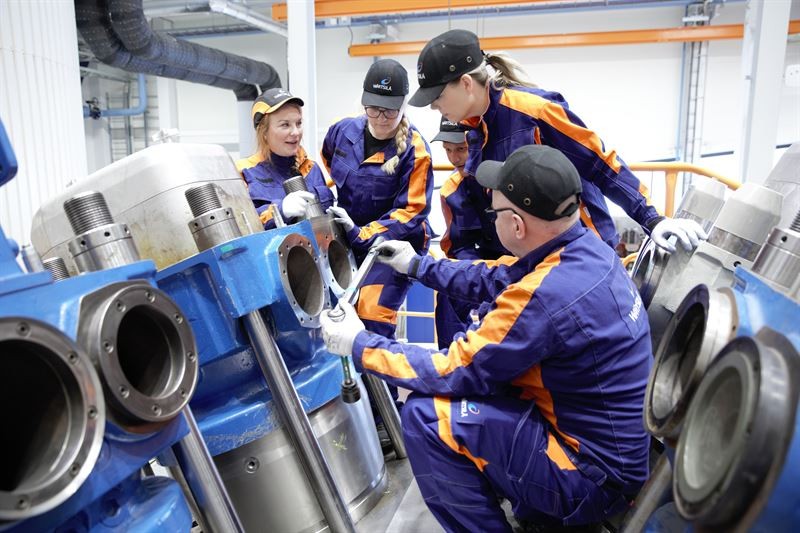Sailing Towards the Future: A Comprehensive Look at Apprenticeship Levels in Australia's Maritime Trade
Introduction
Maritime trade plays an integral role in Australia's economy, yet it's an industry facing a significant shortage of skilled labour and apprenticeship uptake. This blog post aims to explore the existing apprenticeship levels in the maritime trade, specifically within the manufacturing sector. We'll also delve into initiatives designed to tackle the current apprenticeship shortage across the country. Let's navigate these waters together.
#Apprenticeships #MaritimeTrade #Australia #Manufacturing
Understanding the Australian Apprenticeship Levels
In Australia, apprenticeships offer an excellent pathway for individuals to acquire skills and knowledge in their chosen fields, including maritime trade and manufacturing. These programs, traditionally geared towards trade occupations, are categorised into different levels corresponding to the National Qualification Framework.
Certificate I
This is an entry-level qualification that equips individuals with basic functional skills and knowledge to perform routine work. It's usually the first step for individuals pursuing apprenticeships in maritime manufacturing.
Certificate II
This level is a pre-vocational or vocational qualification offering training for semi-skilled or operational roles. Apprentices acquire operational tasks related to maritime manufacturing like basic welding and fabrication.
Certificate III
The Certificate III, often regarded as the traditional 'trade level' apprenticeship, equips learners with a broad range of skills suitable for varied activities and functions. Here, apprentices learn and master maritime manufacturing skills, including vessel construction and equipment installation.
Certificate IV
This level focuses on further skill development for more complex tasks and the potential for supervisory roles. In the maritime manufacturing sector, this could involve advanced manufacturing techniques, quality assurance, and team leadership.
#Australia #MaritimeManufacturing #ApprenticeshipLevels
The State of Apprenticeships in Maritime Manufacturing
Maritime manufacturing, a crucial component of the maritime trade industry, involves the production, maintenance, and repair of vessels and associated machinery. This sector necessitates a skilled workforce capable of handling complex tasks with precision. Unfortunately, Australia is experiencing a decrease in apprenticeship uptake in this sector.
The main reasons include a lack of awareness about maritime trades among young people, perceptions about the trades being ‘dirty’ work, and a shift in focus towards university education. Additionally, economic fluctuations and the cyclical nature of the maritime industry can make it challenging for companies to sustain long-term apprenticeships.
Addressing the Apprenticeship Gap
Fortunately, multiple initiatives are underway to tackle the apprenticeship shortage in Australia's maritime manufacturing sector.
Government Initiatives
The Australian government recognises the skills shortage and has introduced several measures. The 'Boosting Apprenticeship Commencements' program provides a 50% wage subsidy to employers who take on new apprentices, encouraging more businesses to offer apprenticeship opportunities.
Industry Collaborations
Several collaborations between maritime businesses and training providers aim to improve the image of maritime trades and increase their appeal. For example, the Australian Maritime College and the Naval Shipbuilding College are offering new programs and pathways into maritime manufacturing, providing more options for young Australians.
School Partnerships
Schools are increasingly partnering with RTOs (Registered Training Organisations) and industries to promote VET (Vocational Education and Training) pathways and offer apprenticeships to students while still at school. These school-based apprenticeships can help students see the tangible benefits of a career in maritime manufacturing.
#BoostingApprenticeship #NavalShipbuilding #AustralianMaritimeCollege
Conclusion
While challenges persist in Australia's maritime manufacturing sector, the nation is steering towards a brighter future. With continued government support, industry initiatives, and educational partnerships, the tides of change are set to revitalise apprenticeships, fostering a skilled and robust maritime workforce.
As we ride this wave of change, it’s critical to spread awareness about the value and benefits of apprenticeships in maritime trade. Our economy’s health and sustainability depend on our ability to nurture and harness these vital skills for the future.
#MaritimeFuture #SkillsShortage #ApprenticeshipsAustralia


Comments